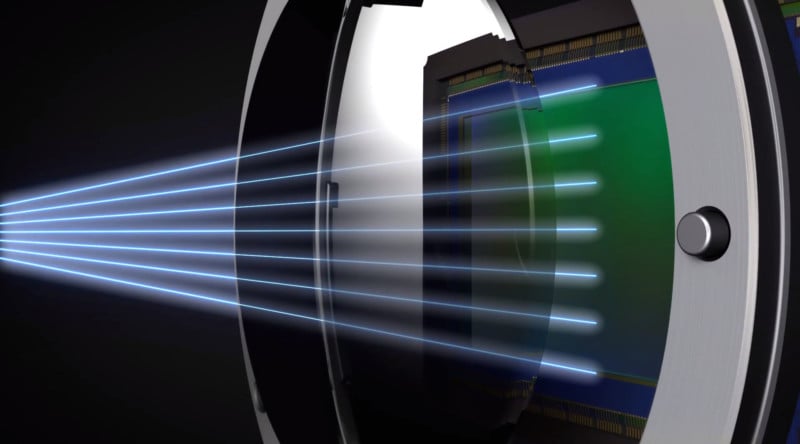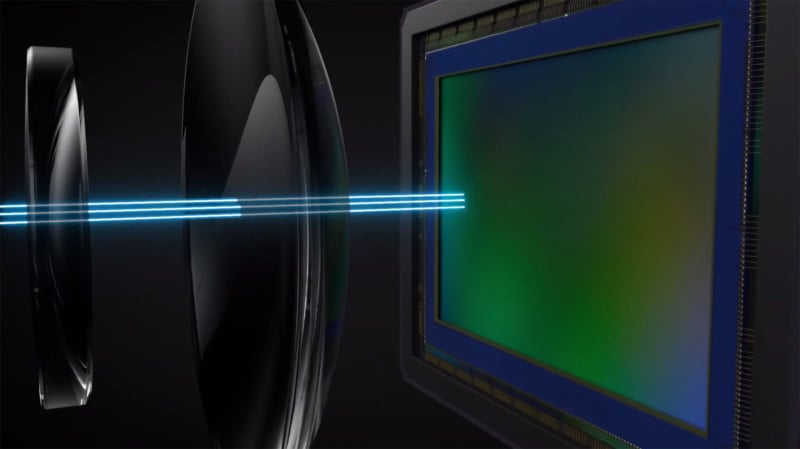Canon: Here’s Why RF Lenses Can Be Better Than EF Lenses
Canon made this 4.5-minute video explaining the technology of its new RF lens mount for full-frame mirrorless cameras and its strengths over conventional (e.g. EF) lens mounts.
Canon says that RF lenses are superior to conventional lenses when it comes to minimizing aberrations caused by refraction, especially at the outer edges of photos.
![]()
![]()
If the “back focus” distance between a lens’ rear element and the camera’s sensor is too far, the light entering the rear element is condensed and is harder to do aberration correction on. Lenses counteract this by making the front element (and whole lens) larger and bulkier.
But by moving the rear element closer to the sensor (i.e. a short back focus), Canon spreads out the light rays passing through the rear element, making it easier to reduce aberration.
![]()
![]()
The RF mount’s large diameter allows wider lens elements to be placed closer to the sensor, reducing the need to bend the light rays as smaller-diameter lens mounts do:

![]()
“These characteristics minimize aberrations and facilitate more effective lens arrangements, making possible higher image quality and high spec performance in more compact designs,” Canon says.
There are also downsides to having a short back focus, though. One of the big ones is that it can introduce more flaring and ghosting as reflected light within the lens hit the sensor. Canon’s solution is its Air Sphere Coating (ASC) and Subwavelength Structure Coating (SSC) technologies to minimize reflected light (and therefore flaring and ghosting).
![]()

It’s interesting to note that the arguments presented by Canon also speak to the strengths of Nikon’s Z mount, which has an even shorter flange focus distance and even larger diameter.
![]()
![]()
The video above serves as an interesting visual explanation to why Canon and Nikon decided it was the right time to split off from their dominant EF and F mounts to create new RF and Z mounts, respectively, as they step into the future of photography.
“Ever focused on the future of imaging, Canon continues to strive for even higher image quality,” Canon says.
(via Canon Imaging Plaza via The Digital Picture)